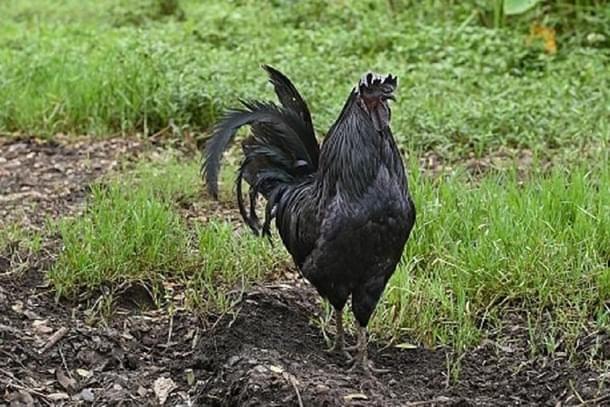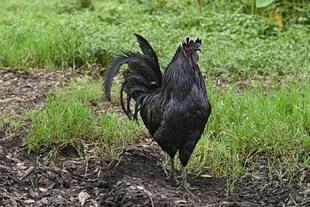News Brief
An India-Japan Project To Conserve The Nutritious And Delectable ‘Kadaknath’ Chicken That Dhoni Farms
Swarajya Staff
Apr 14, 2022, 06:14 PM | Updated 06:14 PM IST
Save & read from anywhere!
Bookmark stories for easy access on any device or the Swarajya app.


Cricketing legend Mahendra Singh Dhoni’s post-retirement venture — a poultry farm breeding the famous ‘Kadaknath’ chicken — is set to receive a boost from an Indo-Japanese project to preserve the declining breed’s germplasm.
After retiring from T20s and ODIs in 2017, Dhoni announced his plans to take to poultry farming. He ordered 2000 hatchlings of Kadaknath chicken, also known as ‘Kali Masi’ from Jhabua in Madhya Pradesh.
Kadaknath, native to Jhabua where it is reared by tribals, got a geographical indication (GI) tag in 2018. The bird, including its flesh, organs and eggs, are black in colour. The flesh of the bird is tasty and highly nutritious, containing only 0.7 per cent cholesterol.
But the breed is running the risk of becoming an endangered species due to over-consumption and also because it lacks resistance to climate change. The bird is also a poor settler. A shrinking habitat due to deforestation — the bird is native to the Kathiawar-Alirajpur jungles of Madhya Pradesh’s Jhabua district — and long and intense spells of summer have also taken their toll on the species.
But an Indo-Japanese project for in-situ conservation of the bird’s germplasm (read this) offers hope for ‘Kali Masi’ (or black flesh). Kadaknath chicken is among the four bird species — two Indian and two Japanese — which have been selected for in-situ conservation under the India-Japan Cooperative Science Programme (IJCSP). The programme, the first of its kind in India, is a collaborative venture between the Central University of South Bihar (CUSB) and Japan’s Kyoto University.
The other Indian bird selected for preservation under this programme is the ‘Aseel Peela’, another native breed known for its delectable flesh and fighting qualities. The Japanese birds are the Okinawa Rail and Golden Eagle.
Ram Pratap Singh, associate professor and head of CUSB’s life sciences department, told Japanese news portal Osaka Shoku Bunka that the in-situ germplasm conservation of the two bird species would be the first of its kind in India.
Singh, who is the IJCSP’s Indian team head — his counterpart from Japan is Mayako Fujihara, a renowned scientist from Japan — said that some of the 1,300 wild bird species native to India are facing the threat of extinction due to anthropogenic and climatic reasons. “Birds like the Great Indian Bustard and the Bengal Florican, as well as some native species of ducks and hens, are under severe threat of extinction. In-situ preservation of their germplasm will help in their conservation,” said Singh.
The ambitious project involves developing male and female preservation technology (gametes are ale or female germ cells that are able to unite with another of the opposite sex in sexual reproduction to form a zygote) for conserving the four bird species.
“Our team will develop technology for male gamete preservation, whereas the Japanese team will develop technology for female gamete preservation. The Indian team will visit Japan twice a year to train them about the newly developed techniques. Similarly, the Japanese team will visit India twice a year for providing training on female germplasm preservation. The technique developed for male and female germplasm preservation would be a game changer in the area of avian conservation, including poultry. It has huge economic potential also,” explained Singh.
The success of this project, say scientists, will spur similar conservation efforts for other species of flora and fauna whose numbers are declining.





